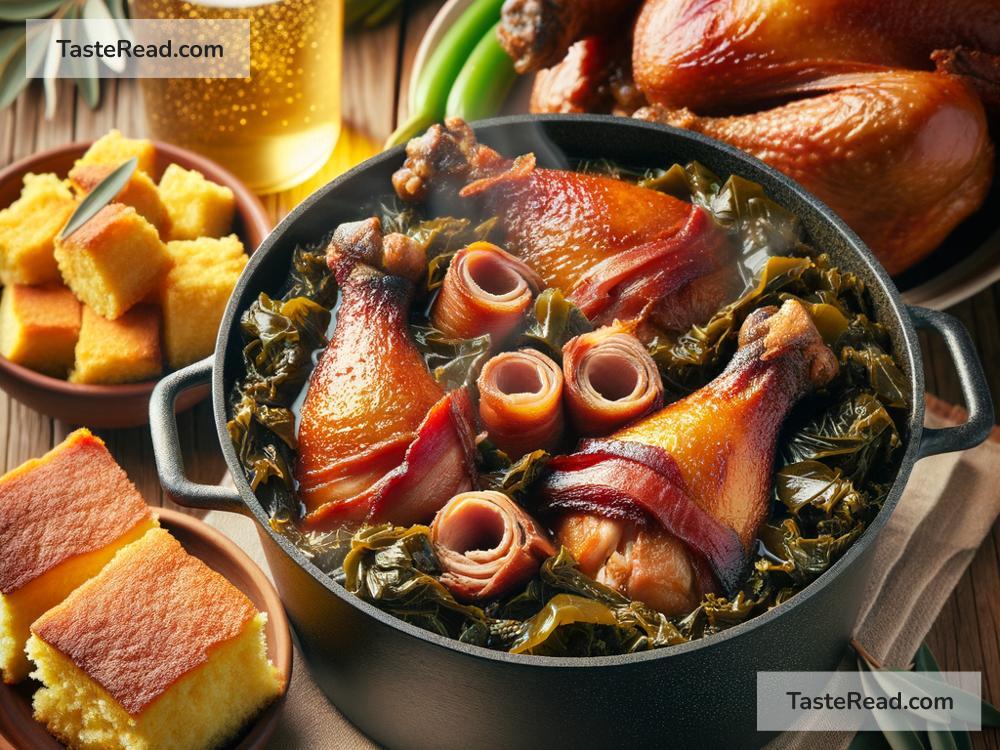Why Collard Greens Are Associated With Soul Food
Collard greens are a staple in Southern cooking and are deeply tied to soul food—a cuisine rich in culture, history, and flavor. If you ask someone what comes to mind when they hear “soul food,” collard greens are likely on the list. But why are these leafy greens so essential to soul food, and what makes them special? Let’s take a closer look at the history, cultural significance, and the delicious ways collard greens are prepared in soul food traditions.
The Roots of Soul Food
Soul food is more than just a style of cooking—it’s a connection to African American history and culture. The term “soul food” gained popularity during the Civil Rights Movement in the 1960s, but its origins go back much further. It’s deeply rooted in the food traditions of enslaved Africans brought to the United States, and many dishes in soul food trace back to West African cuisines.
During slavery, Africans were often given limited resources and scraps to eat, so they had to make do with what was available. Despite this, they created flavorful and nutritious meals using ingenuity, spices, and techniques passed down through generations. Soul food recipes often rely on slow cooking, bold seasoning, and an emphasis on comfort. Collard greens fit perfectly into this tradition because they are hearty, healthy, and easy to grow.
Why Collard Greens Are So Important
Collard greens have a long history. They’ve been grown for thousands of years, dating back to ancient Greece and Rome. Eventually, they made their way to Africa and became a staple crop. When enslaved Africans came to the United States, they brought their food traditions with them, many of which included leafy greens like collards, turnip greens, and mustard greens.
Collard greens were ideal because they could thrive in the Southern climate, even during the winter when other crops struggled. They provided vital nutrients like vitamins A, C, and K, as well as minerals like calcium and iron. For enslaved African Americans and their descendants, collard greens became a dependable source of nutrition in tough times.
Over time, collard greens became a household favorite, not just for survival, but for celebration. They were a key part of Sunday dinners, holidays, and communal gatherings where families and loved ones came together to share food and stories.
Collard Greens and the Soul Food Tradition
In soul food cooking, collard greens are treated with care and love. They aren’t just boiled or steamed—they’re cooked low and slow to create a tender, flavorful dish. Typically, the greens are simmered with smoky, rich ingredients like ham hocks, turkey necks, bacon, or salt pork. These meats add depth to the dish and infuse the greens with an irresistible flavor.
The cooking liquid, often called “potlikker,” is highly prized. Potlikker is the flavorful broth left behind after the greens are cooked. It contains nutrients from the greens and the seasoning used in the dish. Some people enjoy potlikker as a soup, while others use it to dip cornbread—a classic soul food pairing.
The addition of spices and seasoning is another hallmark of soul food. Garlic, onions, vinegar, and crushed red pepper are common choices, creating a balance of tangy, savory, and slightly spicy flavors. The result is a dish that warms your belly and soothes your soul.
Collard Greens Represent Resilience
Collard greens are more than a tasty dish—they symbolize the resilience and creativity of African American communities. Enslaved Africans and their descendants took what little they had and turned it into something beautiful and delicious. They transformed humble ingredients like greens into meals full of nourishment, flavor, and love.
Despite hardships, soul food, including collard greens, became a way to preserve cultural identity and celebrate heritage. It is a cuisine that honors the struggles and triumphs of a people, showing how food can be a source of strength and connection.
Collard Greens in Modern Times
Today, collard greens are still a beloved part of soul food and Southern cooking. They can be found on the table at family reunions, barbecues, church potlucks, and holiday feasts. While traditional recipes remain popular, people are also experimenting with new ways to prepare collards, like sautéing them with garlic or blending them into smoothies.
Collard greens have even gained global attention as chefs and food lovers embrace Southern cuisine. Their versatility and earthy flavor make them a favorite ingredient for cooking enthusiasts everywhere.
Final Thoughts
Collard greens are more than just a side dish—they’re a symbol of history, culture, and resilience. Their place in soul food reflects the creativity and resourcefulness of African American cooks who found ways to turn simple ingredients into something extraordinary.
Whether you enjoy collard greens as part of a classic soul food feast or in a modern twist on the dish, remember that each bite carries centuries of tradition and love. Collard greens remind us of the power of food to bring people together, tell stories, and nourish not just the body, but the soul. So next time you sit down to enjoy a plate of collard greens, take a moment to appreciate the rich history behind them. They are truly a little piece of soul on your plate.


